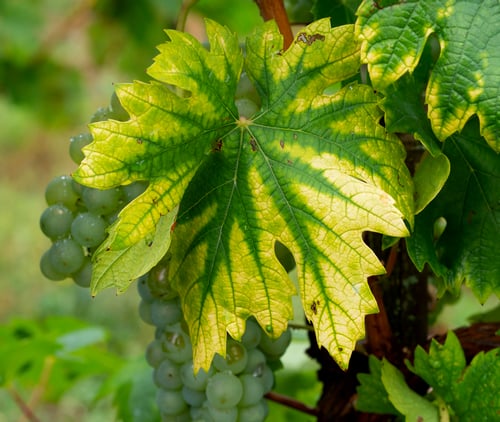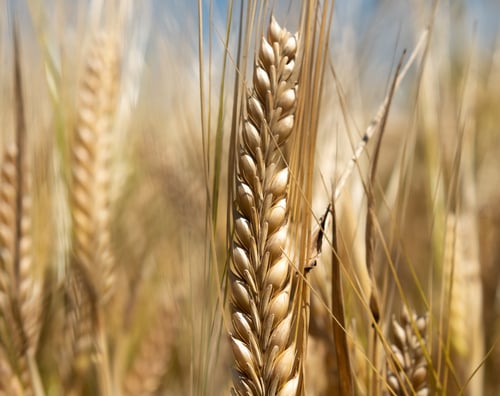Over fertilization with either synthetic and organic material can result in toxic soil that no longer supports plant growth. This is a common problem in raised beds that are filled with too much organic matter but it can occur in any garden. Today I’ll have a look at both the cause of high phosphorus in soil and ways that you can use to reduce the level.
Key Takeaways
- High phosphorus levels are a series problem that is becoming more common.
- Reduce the use of synthetic and organic fertilizer with high relative phosphorus.
- Reduce P levels by growing the right crops and removing all organic matter.

Is High Phosphorus a Common Problem?
For us more seasoned gardeners this problem is a new one which I never heard about it until about 10 years ago. How significant is the problem? The Auburn University reports “that more than 40 percent of Alabama garden soils have very high or excessive levels of phosphorus even though phosphorus is naturally low in all Alabama soils”. Alabama is not unique in this respect, making this a significant problem that should be a warning to all gardeners.
In the past, synthetic fertilizers were not as popular and gardeners did not have easy access to bagged composted manure. That has changed, resulting in gardeners poisoning their soil in an attempt to improve it.
Consider this. When you add 2 pounds of a 13-13-13 fertilizer over 100 square feet and grow a high yielding crop such as cabbage, peas, potatoes, tomatoes, and corn, only 27% (0.5 lb) of the phosphate is used by the plants. The remaining 73% (1.5 lb) is left behind in the soil.
What Causes High Phosphorus in Soil?
To understand this issue it is important to understand how nutrients move through soil. What happens when you put some 10-10-10 fertilizer on the soil?
The nitrogen is very soluble and rain or irrigation water quickly moves it to lower soil levels. Nitrogen is also used in large amounts by everything living in soil, including microbes and they quickly use up a nitrogen source. The remainder gets washed to lower soil levels where plants have trouble getting to it.
Potassium is also very soluble in water and it would run away with the nitrogen except that it is more tightly held by clay and organic matter due to their high CEC values which attract positive ions. Consequently, it travels through soil slower than nitrogen, but it still moves fairly quickly.

The movement of phosphorus in soil is quite different. It is very insoluble and is easily converted to insoluble forms when it combines with other ions. When phosphorus fertilizer is placed in the surface of the soil, it mostly stays there and only migrates into the soil a fraction of an inch each year.
How does this affect your garden? When you place some fertilizer on your garden the nitrogen and potassium quickly move through the soil, while phosphorus stays at the top. Later in the season you add some more fertilizer and the same thing happens. Over the years you add more and more fertilizer and the phosphorus continues to accumulate in soil.
Not only does phosphorus accumulate, but it tends to stay near the top where most of the plants roots are located. Before long the soil contains so much phosphate it becomes toxic.
Excessive soil phosphorus reduces the plant’s ability to take up required micronutrients, particularly iron and zinc, even when soil tests show there are adequate amounts of those nutrients in the soil.
The same thing happens with organic fertilizer including compost and manure. Such material has relatively high levels of phosphorus compared to nitrogen. Plants use nutrients in a ratio of about 3-1-2, but manure and compost tends to have a ratio of 1-1-1. They contain too much phosphorus compared to nitrogen, making the problem of phosphorus accumulation even worse.
The use of large amounts of organic matter in raised beds make them more likely to show phosphorus poisoning than real soil.
Symptoms of High Phosphorus Levels
Excess phosphorus can cause iron and zinc deficiencies, especially in acidic soil. This can cause interveinal chlorosis which many people incorrectly attribute to an iron deficiency, but if phosphorus ties up the iron, adding more iron will not solve the problem.

An iron deficiency in plants exhibits a yellowing between leaf veins while zinc deficiencies show as a bleaching of the tissue. Both are more visible in the youngest tissue and can occur at the same time.
“Many annual bedding plants and newly planted perennial shrubs also can show symptoms. Acid-loving plants like azaleas and blueberries, growing in neutral and slightly alkaline soils, can be killed if excessive
amounts of phosphorus are applied”.
Adding zinc or iron to high phosphorus soil does not help since both are quickly converted to non-available forms. Foliar sprays of either can help a plant in distress but this is just a short term fix.
Natural High Phosphorus Levels
Some soil has a natural high level of phosphorus. In such areas it is especially important not to add any more with fertilizers.
Reducing the Phosphorus Level
A lot of the fertilizer nutrients can be flushed out with water but that does not work with phosphorus due to the low solubility of the salts that are formed (calcium and magnesium phosphate are salts).
Step one is to stop adding more phosphorus. This includes synthetic fertilizer with anything other than a zero middle number and all organic fertilizer such as compost and manure.
One option is to replace the soil. Unfortunately, this is labor intensive and expensive, but it does work.
A slower option is to grow cover crops that like high phosphorus. This includes rye, oats, wheat, barley and brassicas (broccoli, collards, cabbage, cauliflower, kale, mustard greens, spinach, Swiss chard, and turnips). These plants will remove excess phosphorus and incorporate it into plant parts.

It is critical that at the end of the season these plants be removed entirely, including the root system. By removing the plant you are also removing the phosphorus. The plants can be composted and used in other parts of the garden that need more phosphorus.
Cover crops work, but are a slow remediation process. It could take a couple of years before levels are low enough for other crops.
Let Nature Take Care of Things
What happens if you do nothing? Over time nature converts phosphorus to “rock phosphates” that are not very soluble and don’t tie up other nutrients, except in acid soils.
It is not clear how fast this process is, but one estimate is that soil with phosphorus levels between 150 to 200 ppm will probably have problems for 3 to 5 years. Higher levels will take much longer. These values vary significantly based on soil types.
Prevent a Phosphorus Problem
There are things you can do to prevent the problem.
- If you use synthetic fertilizer, use one with a zero or very low middle number unless you have a phosphorus deficiency.
- Don’t add more than an inch or two (5 cm) of compost or manure each year. This amount is unlikely to cause you a problem.
- Don’t add too much organic fertilizer such as fish emulsion or seaweed because they, like other organic material, have a high phosphorus level compared to nitrogen.
- Vermicomposting has a high phosphorus level, so don’t use too much.
- Don’t use bone meal – it has no place in the garden anyway.





Thanks so much for this information and your YT video on the subject! I pretty much did everything you said not to do and have just confirmed excessive P in my raised beds via a soil test. Probably going to just start over w/ new soil rather than attempt a remediation. Just bought your “Plant Science” book and excited to read that as well Thanks!
Thank you very much.
It’s hard to find commercial topsoil with low P. I guess the solution is the slow one involving the P-loving plants you suggest. Thanks for the great info, as usual.